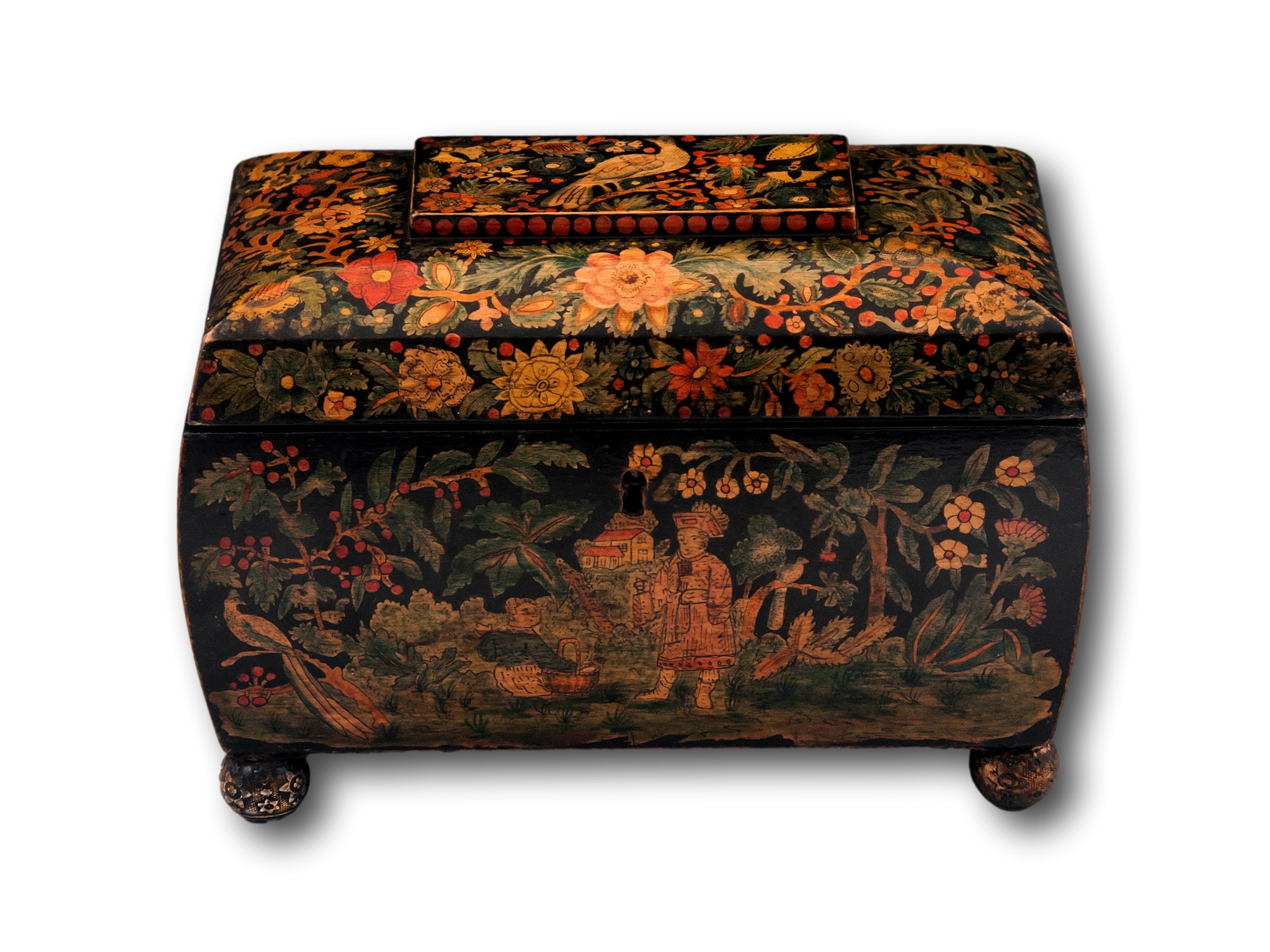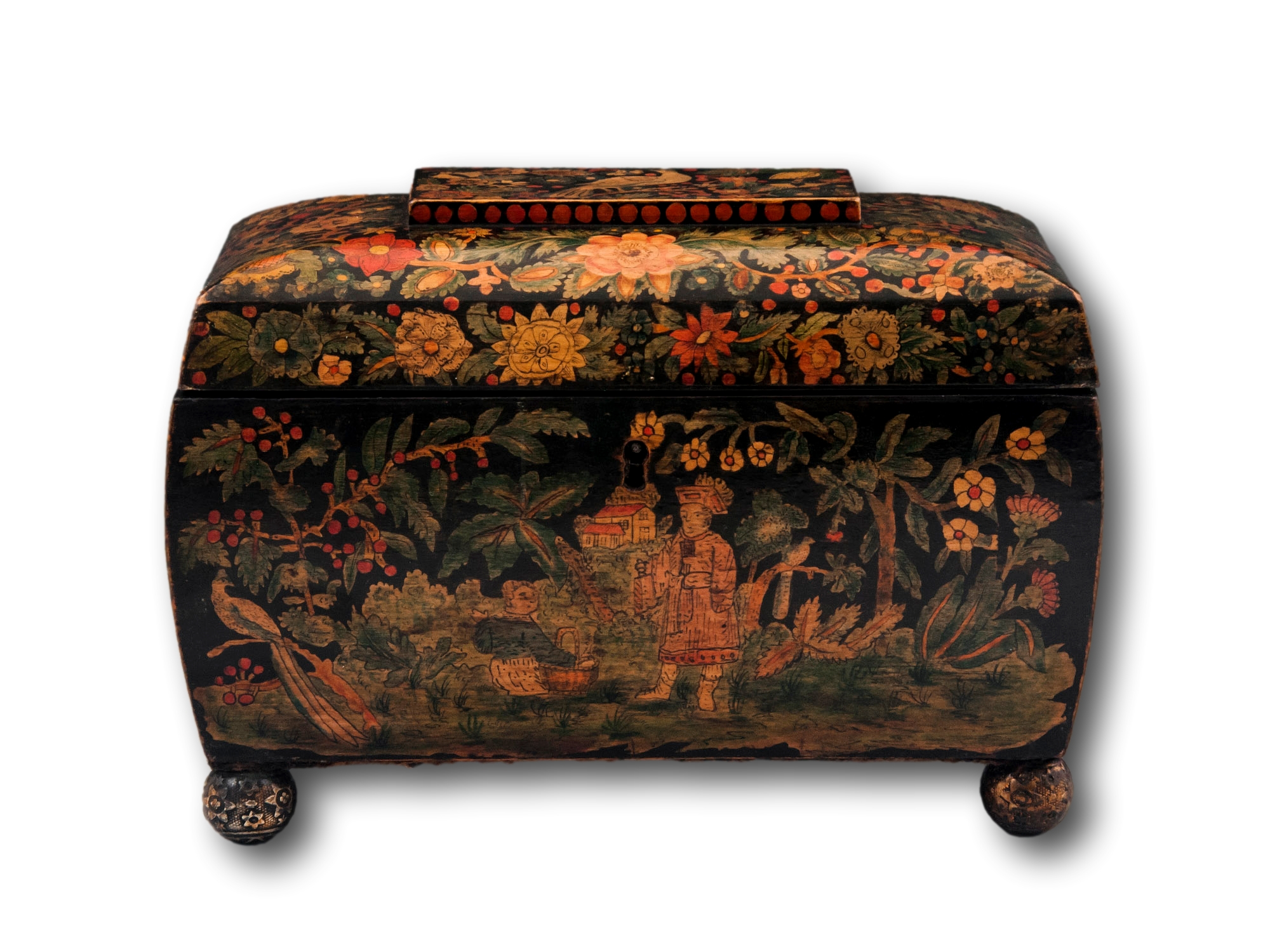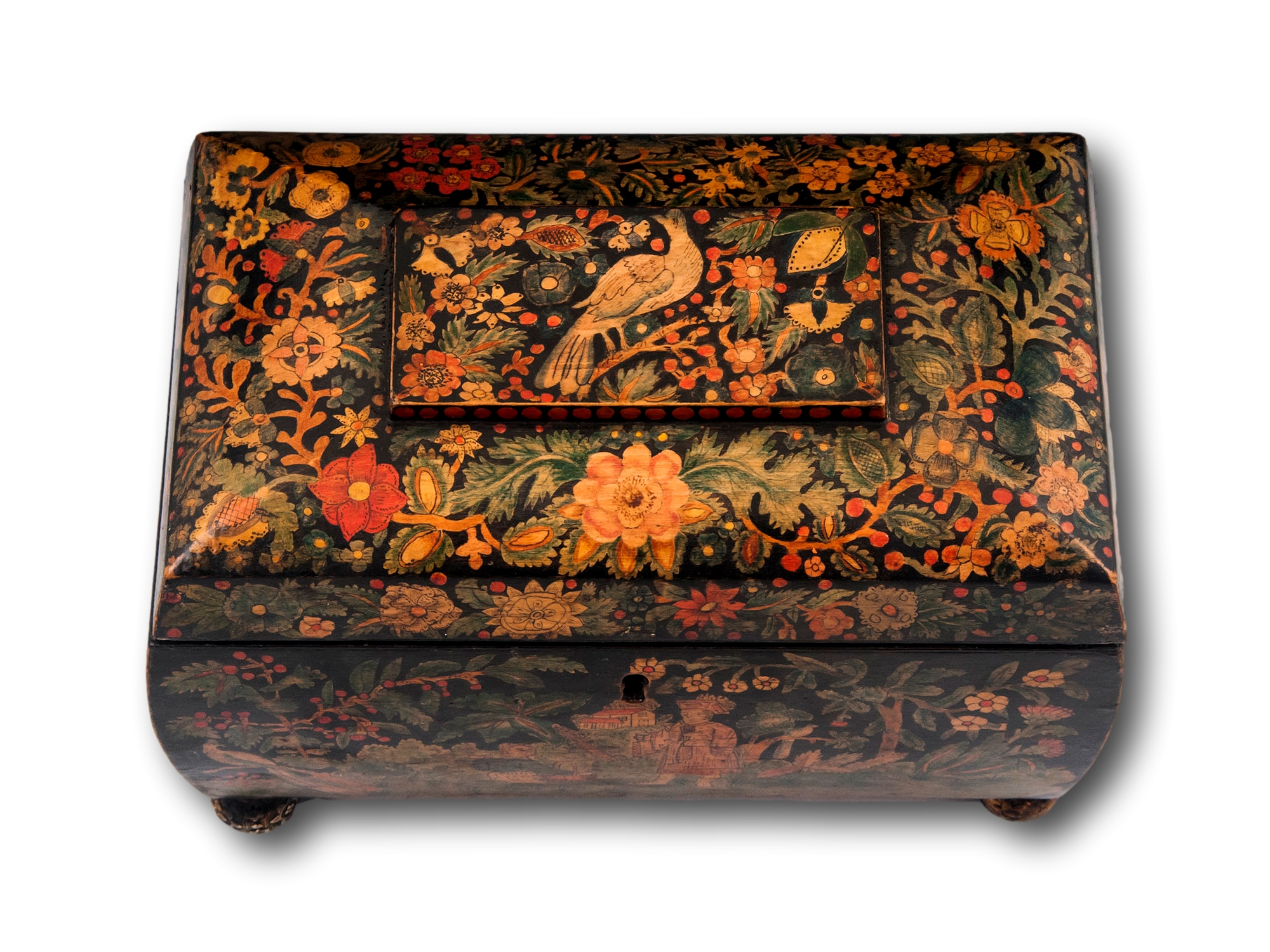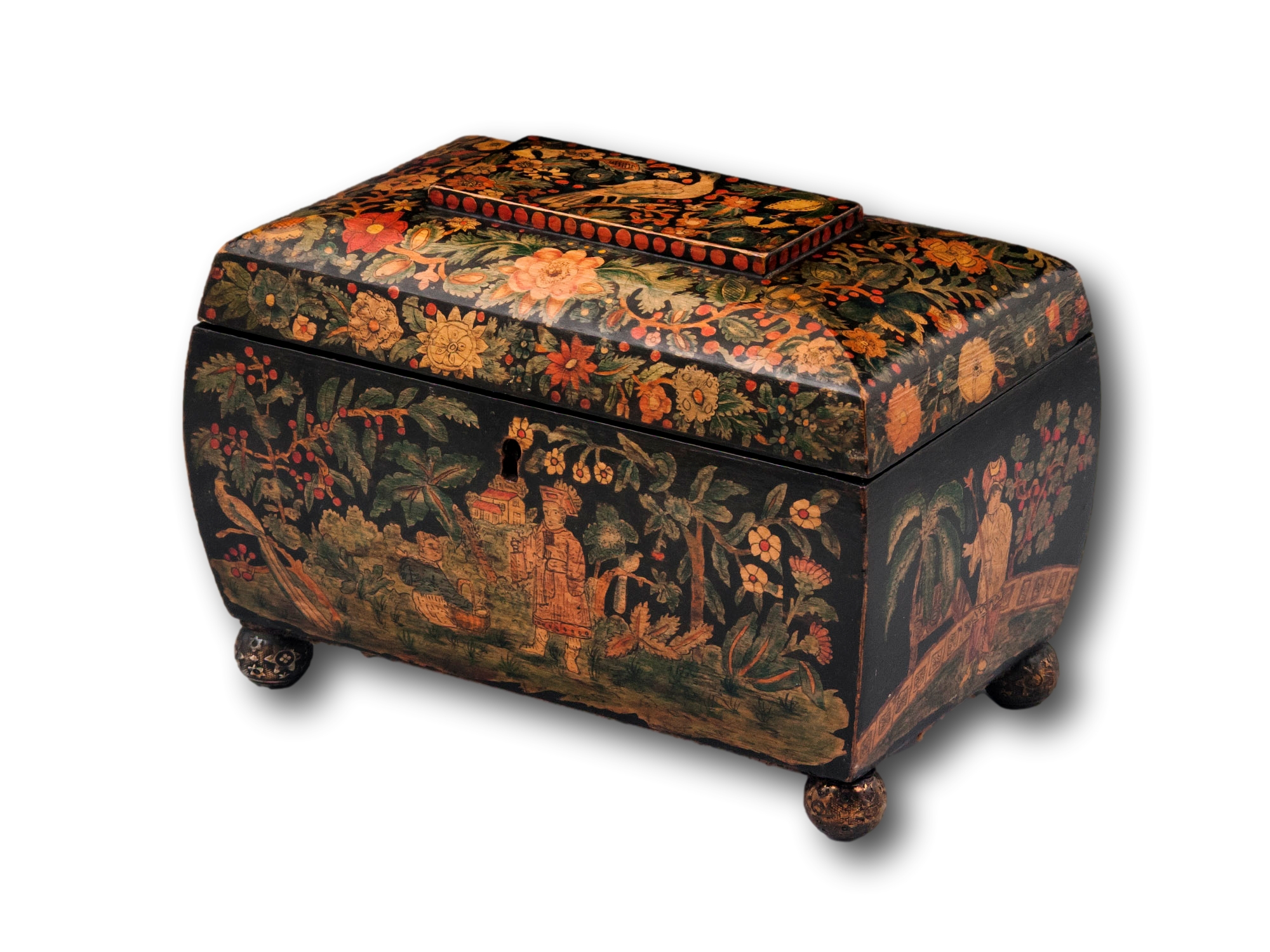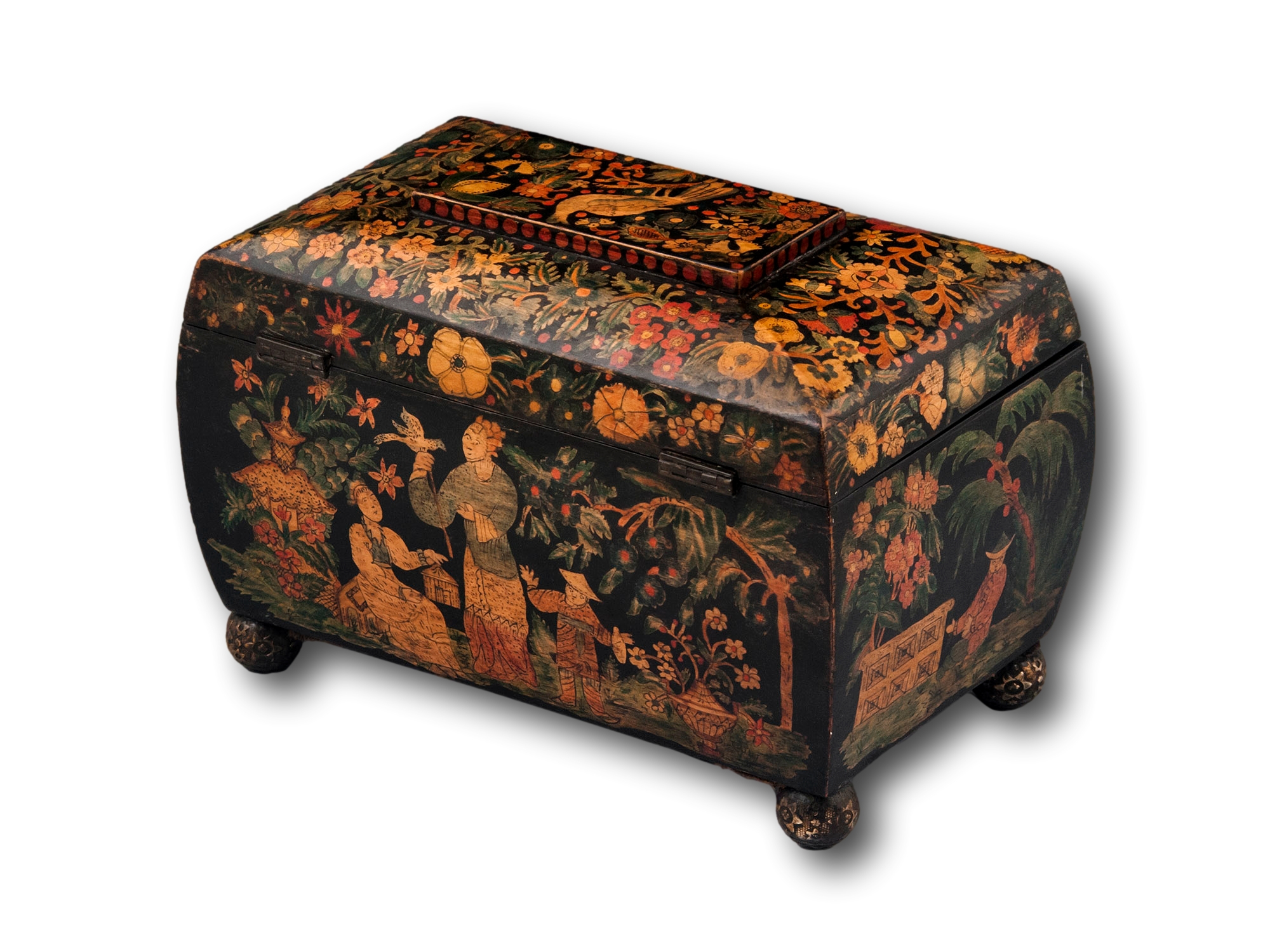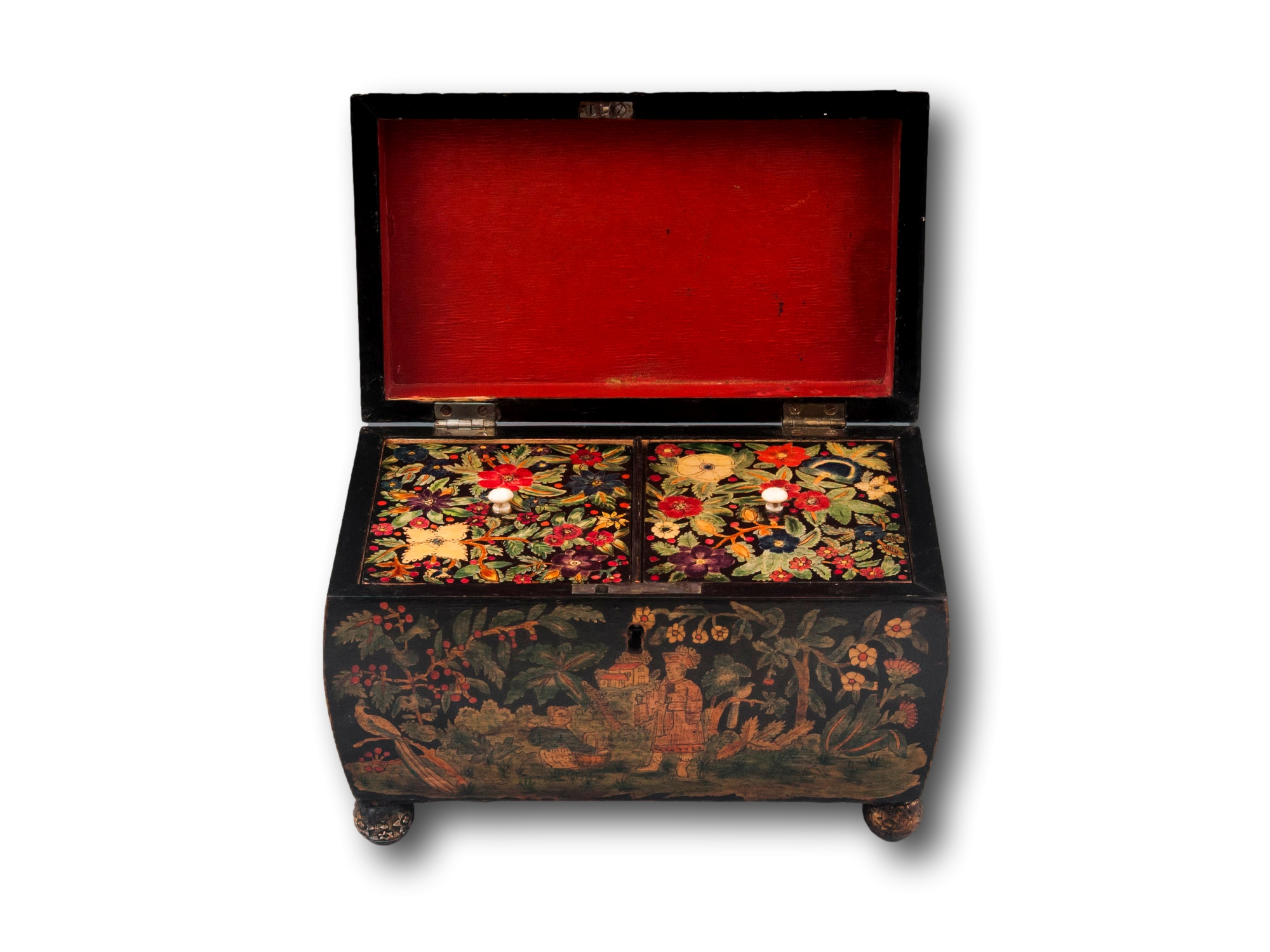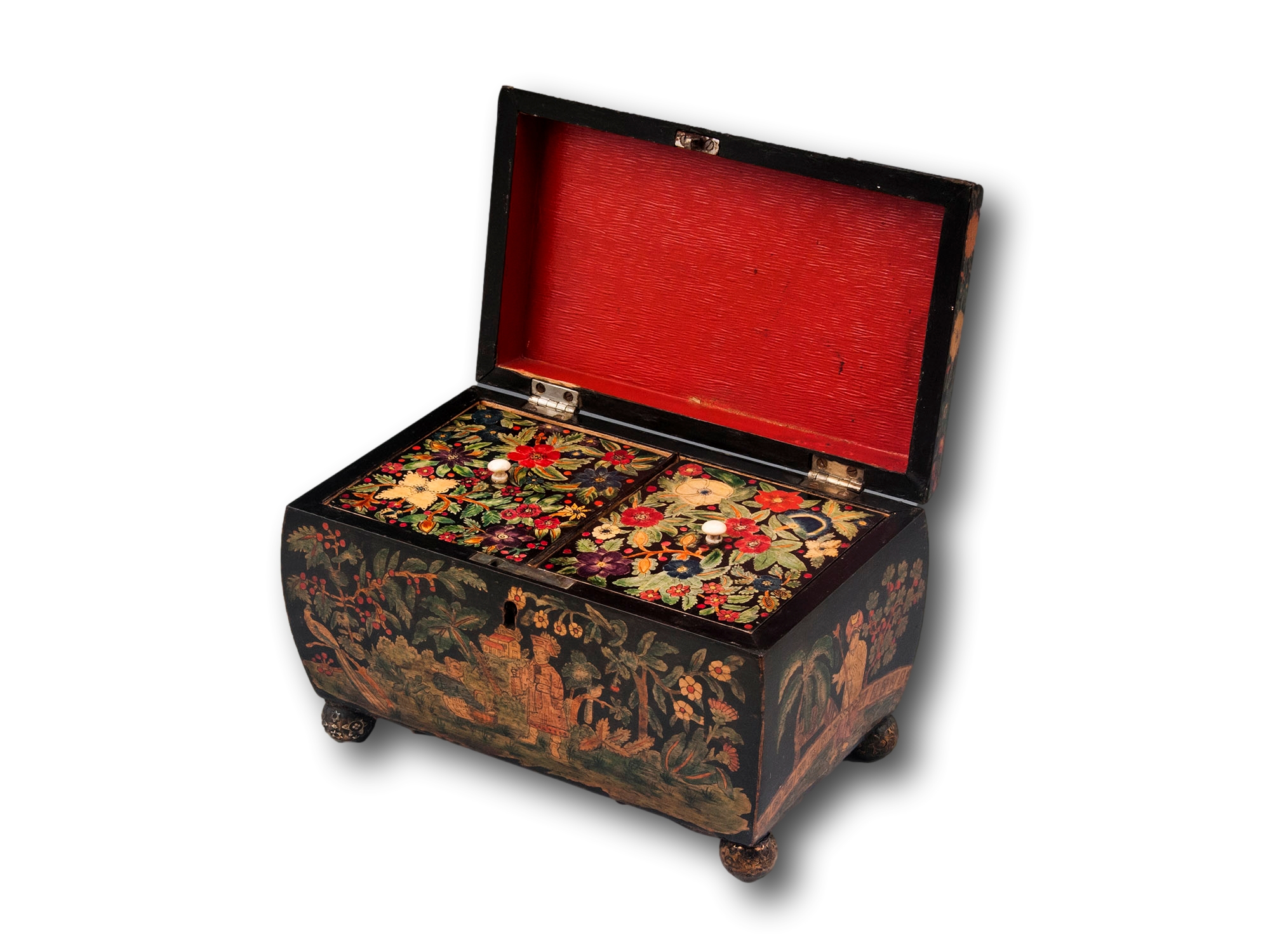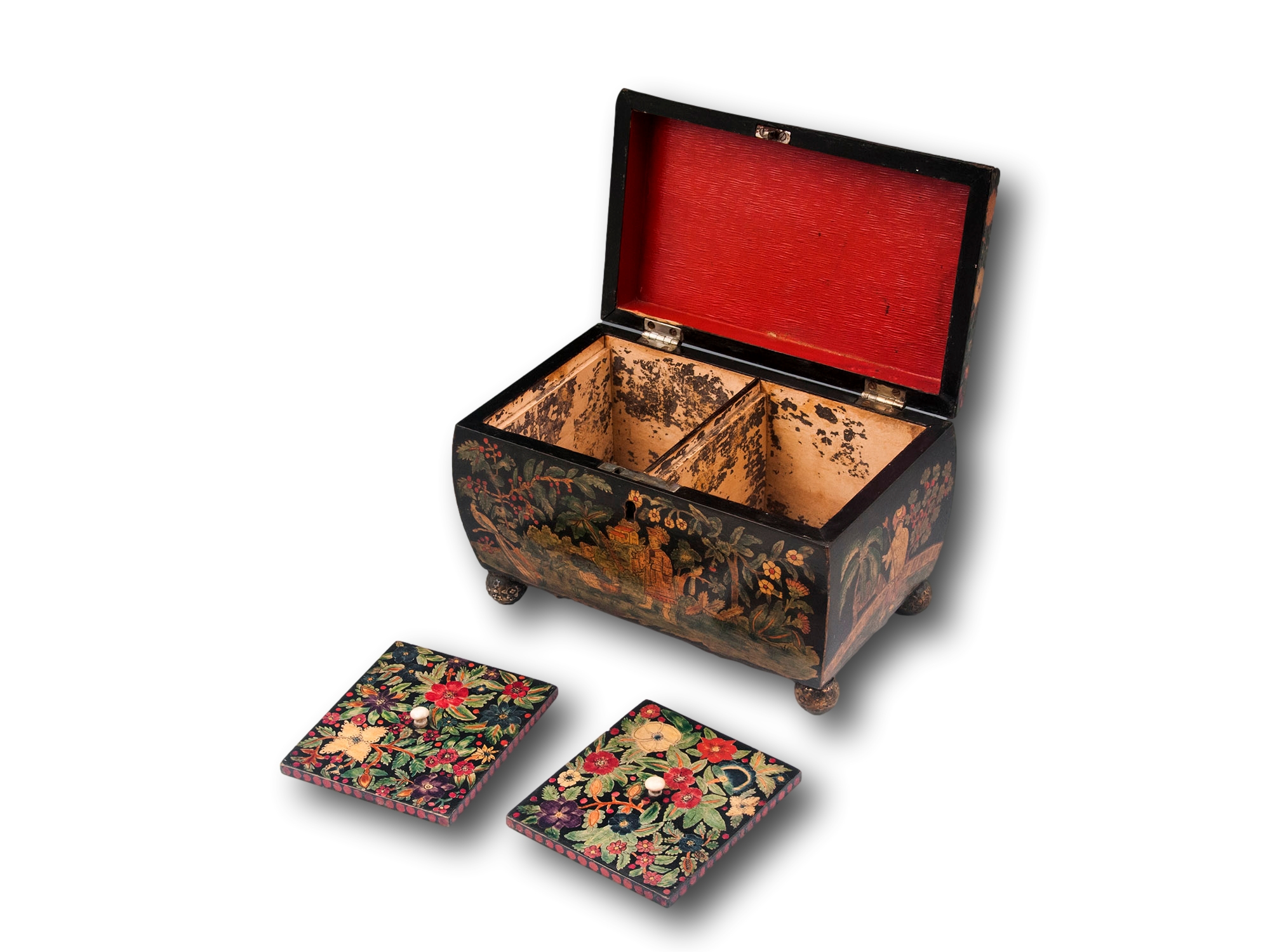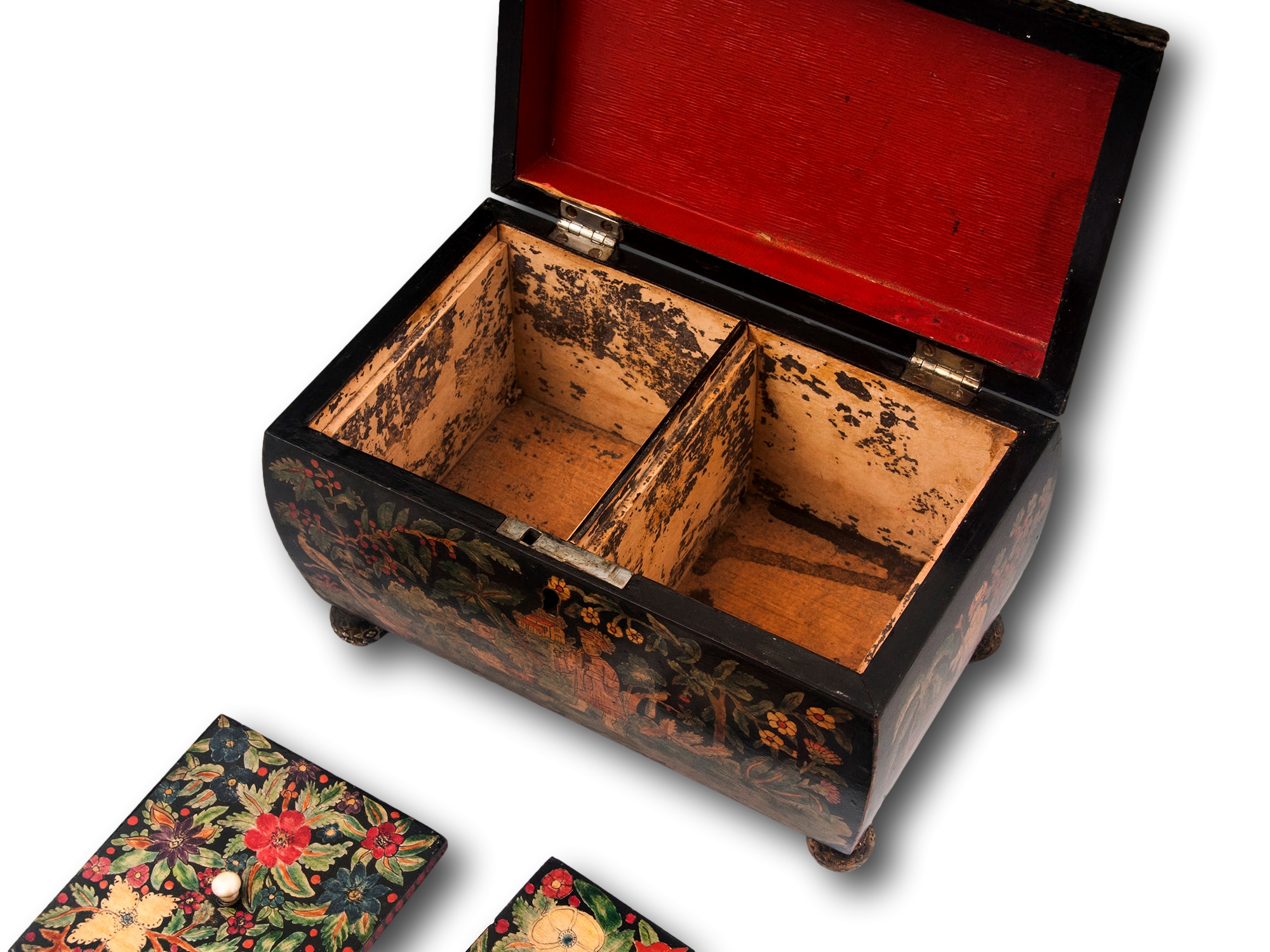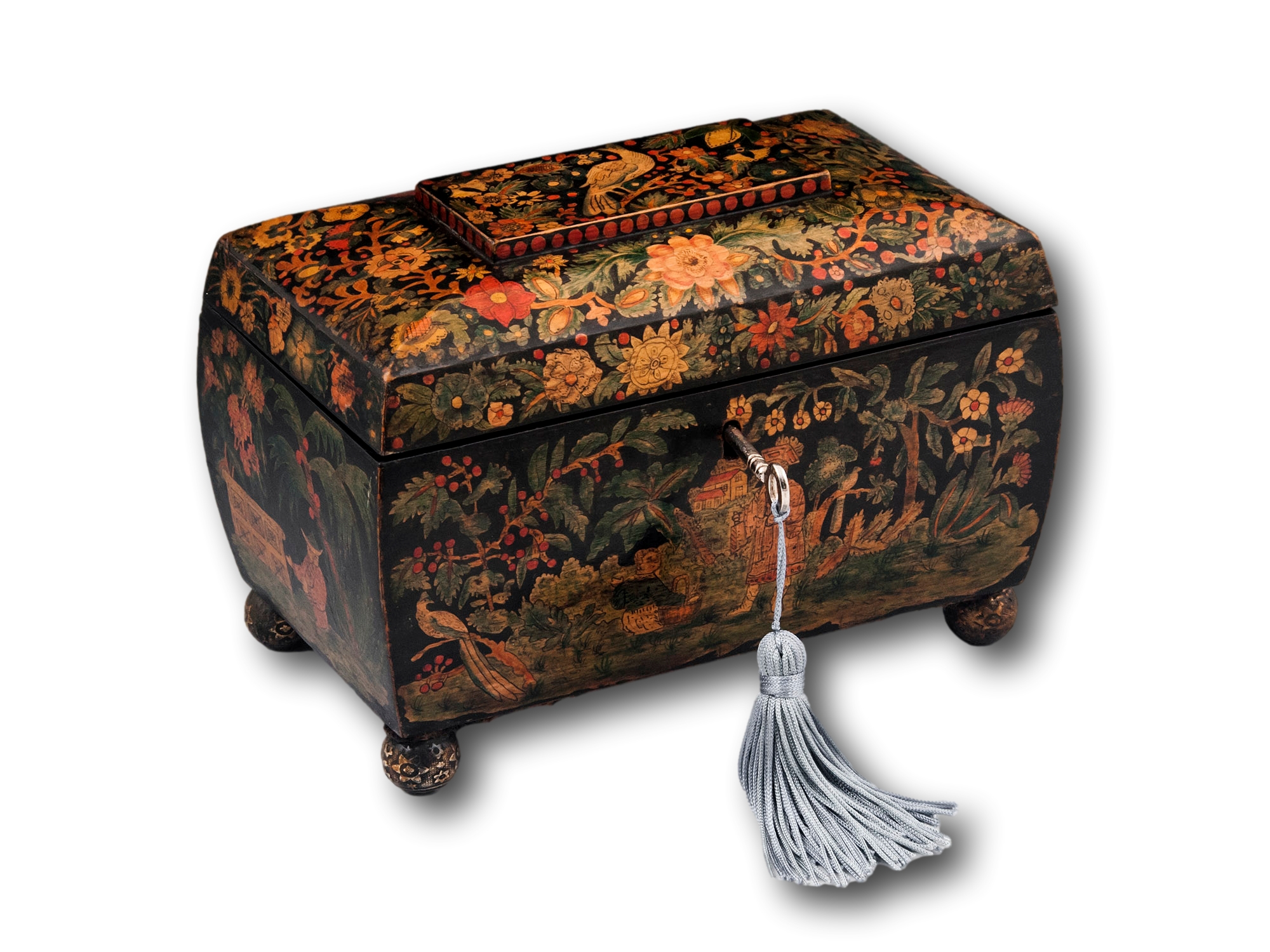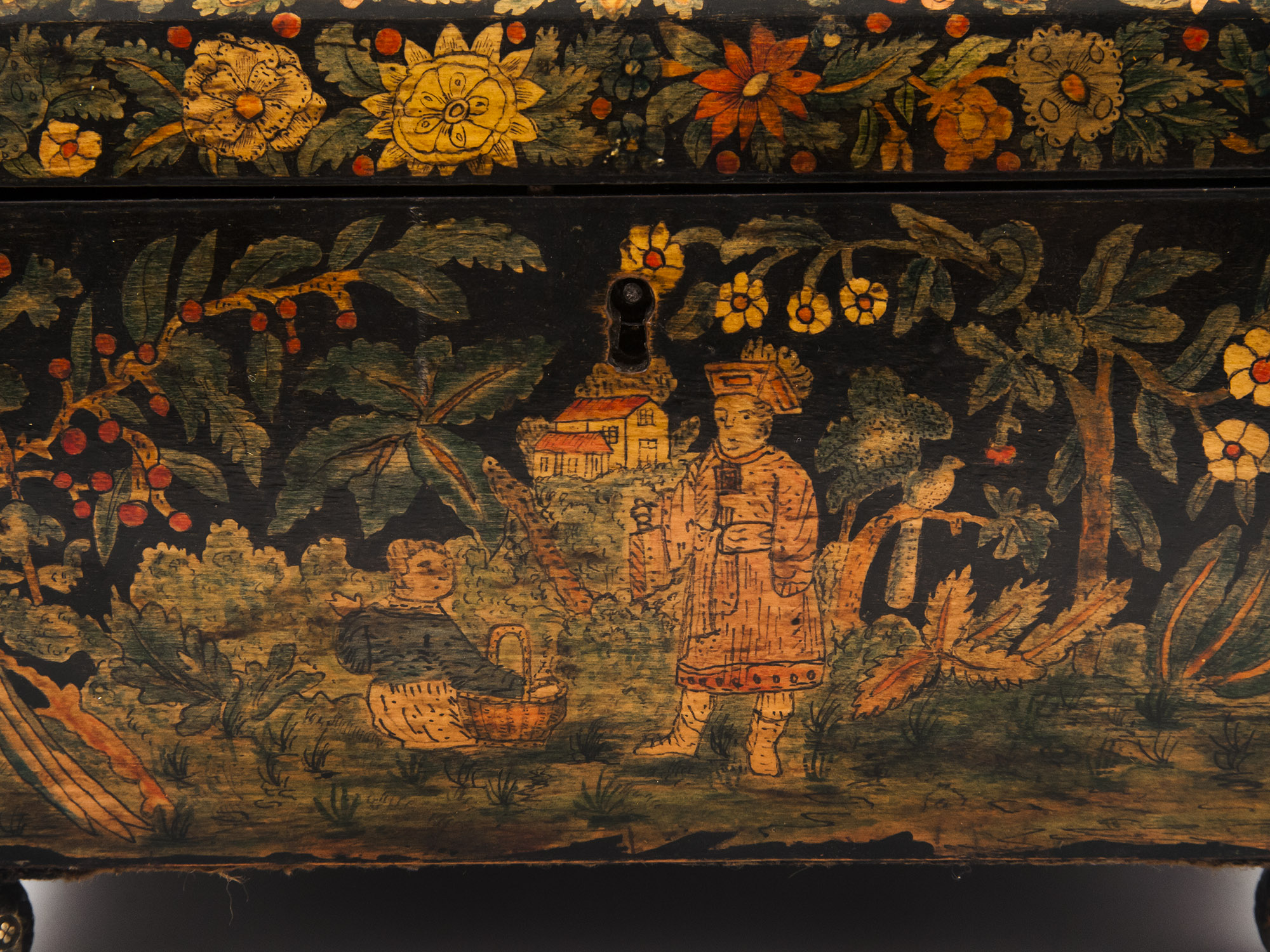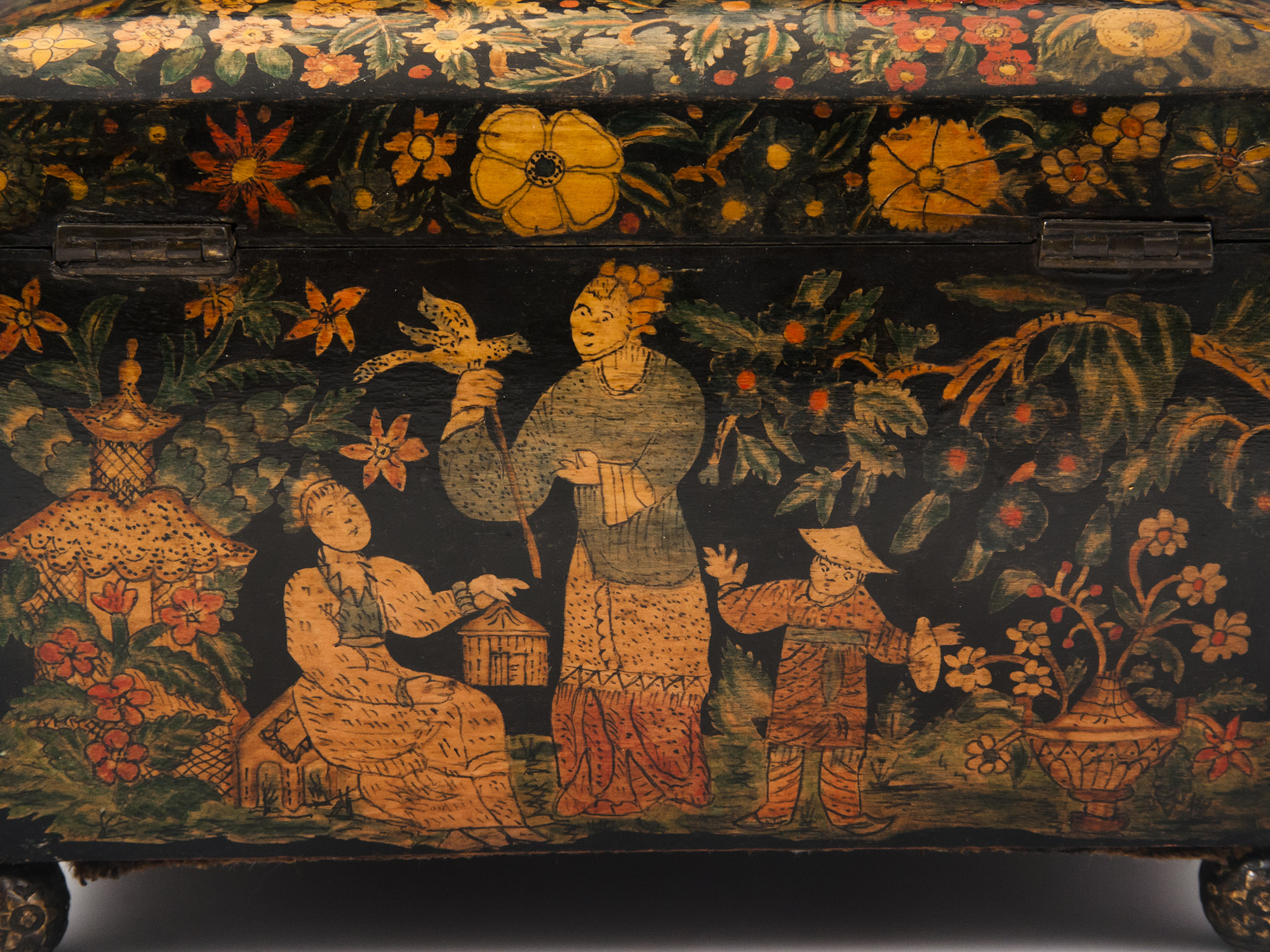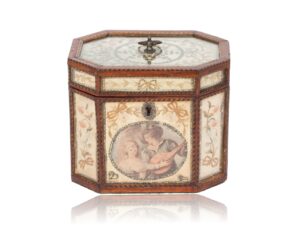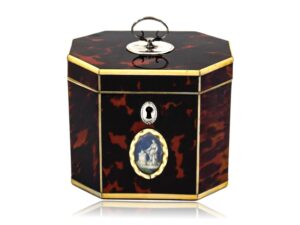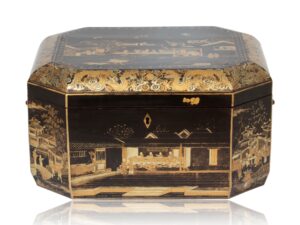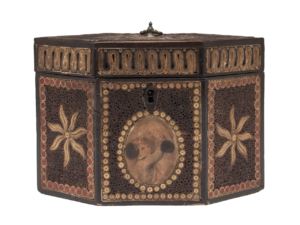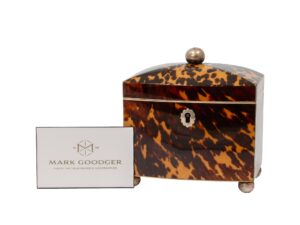Regency Chinoiserie Penwork Tea Caddy
SOLD
Decorated Extensively with Blossoming Flowers From our Tea Caddy collection, we are delighted to offer this Regency Chinoiserie Penwork Tea Caddy. The Tea Caddy of bombe shape formed from Sycamore with a central raised lid featuring extensive decoration throughout with... Read More
Rare Penwork Tea Caddy Circa 1815
| Dimensions | 21 × 12.5 × 14 cm |
|---|---|
| Period | |
| Year | |
| Country | |
| Collection | |
| Medium | |
| SKU | 500683 |
Description
Description
Decorated Extensively with Blossoming Flowers
From our Tea Caddy collection, we are delighted to offer this Regency Chinoiserie Penwork Tea Caddy. The Tea Caddy of bombe shape formed from Sycamore with a central raised lid featuring extensive decoration throughout with vibrant blossoming flowers, vines, foliage and birds. Each panel contains a central scene with various figures amongst large landscapes. The Tea Caddy is raised on four brass engraved ball feet. When opened the Tea Caddy reveals two heavily decorated lids with turned handles, the containers still show traces of the original foil lining within. The Tea Caddy dates to the early 19th century during the Regency period circa 1815.
The Tea Cady comes complete with working lock and tasselled key.
Sycamore is a member of the Maple family, found in Europe. It is light yellow in colour and is often a very clean wood, with a straight, fine grain. The wood is often pippy. However, these pips are usually a very similar colour to the rest of the wood making them hardly visible.
Chinoiserie is a decorative style in Western art, furniture, and architecture that was undertaken particularly in the 18th century. It is characterized by the use of Chinese motifs and techniques hence the name Chinoiserie.
Regency is an era of British history between 1811 and 1820. The Regency era was initiated by King George III first suffered a debilitating illness in the late 1780s. He relapsed into his mental illness in 1810 and by the Regency Act in 1811 his eldest son George, Prince of Wales, was appointed prince regent to discharge royal functions. When George III died in 1820, the Prince Regent succeeded him as George IV.
Penwork, or pen and ink, was used on boxes to illustrate picturesque scenes and, at times, to document a vacation or visit to a foreign country. The prints would often depict people, landscapes, birds, insects, plants, flowers, and animals, as well as stories from Greek mythology or depictions of spa towns. Each of these drawings was very accurately drawn and beautifully varnished with shellac. It is likely that some penwork was commissioned by professional artists. Many of these works were highly detailed, showcasing the skill and expertise of the artist. Penwork was primarily a pastime practised by women (some of whom were just as skilled as the professionals) which explains the presence of so many examples throughout history.
With every purchase from Mark Goodger Antiques, you will receive our latest catalogue, a Certificate of Authenticity, detailed care instructions for your chosen piece and an independent invoice (for insurance purposes) will be enclosed. As well as being protected by a no-hassle, money-back policy, your piece will be entirely insured during the shipping process to ensure the safety of your item.
Additional information
Additional information
| Dimensions | 21 × 12.5 × 14 cm |
|---|---|
| Period | |
| Year | |
| Country | |
| Collection | |
| Medium | |
| SKU | 500683 |
